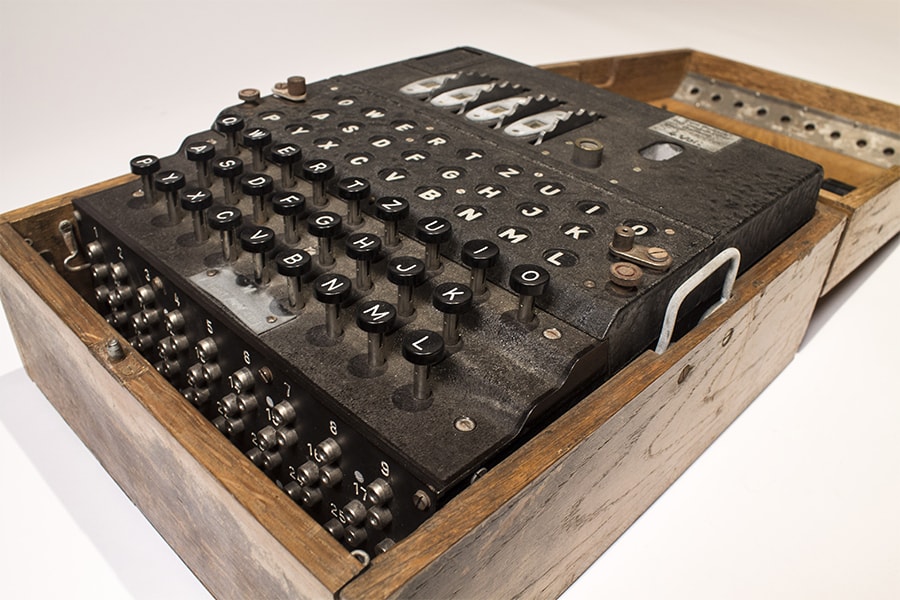
Crucial World War II encryption devices have found a home at the Carnegie Mellon University Libraries thanks to the generosity of author Pamela McCorduck, wife of the late Computer Science Department Head Joseph Traub.
Totaling more than 50 calculating machines, letters and books, the collection contains important items in the history of computing. Included are two Enigma machines, electro-mechanical rotor cipher machines used to encrypt communication. Most notably, they were used by Nazi Germany to protect military communication during World War II. With this gift, which includes one 4-rotor machine and one 3-rotor machine, CMU becomes one of a handful of American institutions to own an Enigma machine.
Other highlights include:
- A Thomas Arithmometer, the first commercially produced mechanical calculator;
- A Curta Type I Calculating Machine, designed by Curt Hertzstark while he was a prisoner in a concentration camp; and
- Rare books by Charles Babbage, the 19th century mathematician considered by some to be a "father of the computer."
The items from the Traub-McCorduck Collection will be added to the University Libraries Special Collections. The University Archives, also housed in the Libraries, contains the papers of Traub and McCorduck, as well as noted computer science pioneers Allen Newell and Herb Simon, who worked alongside Traub in the department.
A pioneering computer scientist who led Carnegie Mellon's Computer Science Department during a crucial period in its history, Traub, who died in 2015, went on to found the computer science department at Columbia University. McCorduck is an author of influential books on artificial intelligence.
"As the second chair of what was then CMU's Computer Science Department, Joe's career eventually took him back to his alma mater, Columbia, but he never lost his deep loyalty, affection and admiration for CMU," McCorduck said. "Moreover, for one of the best schools of computer science in the world, a collection of ancestral machines seems a good marker of where the field has come from.